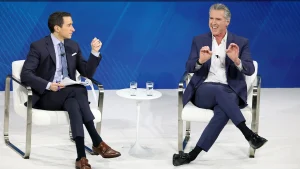For more than a century, scholars have wrestled with a puzzle so ancient, so enigmatic, that it has resisted every attempt to solve it. It’s the script of the Indus Valley civilization, a culture that flourished around 5,000 years ago in what we now know as India, Pakistan, and Afghanistan. This script has remained undeciphered, leaving the language, culture, religion, and even the story of the civilization itself a tantalizing mystery.
The stakes for unlocking this riddle have now been raised dramatically: a $1 million reward for anyone who can decipher the script. This eye-catching offer was recently announced by M.K. Stalin, the chief minister of Tamil Nadu, a southern state of India. But as intriguing as this intellectual challenge is on its own, it’s also steeped in the complexities of modern politics and cultural identity.
A Lost Language and an Ancient Civilization
The people of the Indus Valley built an advanced urban culture during the Bronze Age. With planned cities, impressive water management, fortified structures, and fine craftsmanship in pottery and terra cotta, their civilization stood on par with ancient Egypt, Mesopotamia, and China. Yet, despite the discovery of over 2,000 archaeological sites and about 5,000 inscriptions carved into stone, metal, and clay, the lack of a “Rosetta Stone”-like key has left their written script unintelligible to modern scholars.
This inability to read the inscriptions is frustrating for researchers. Until the script is deciphered, significant aspects of their society—such as their language, governance, and even the reasons for their decline—remain speculative and incomplete. Some argue that solving the mystery would bridge their civilization from "prehistory" to bona fide history, deepening our understanding of the cultural evolution of South Asia.
A Prize with Cultural Undertones
While the $1 million prize is ostensibly about bolstering scholarship, it’s also unfolding amid an ongoing cultural and political conflict over India’s historical identity. Current debates are particularly driven by competing narratives about who the “original people” of India were.
On one side stands the Hindu nationalist vision, championed by Prime Minister Narendra Modi’s party. Proponents of this view place the Aryan race—an ancient group thought to have introduced Sanskrit and Hinduism to India—as India’s foundational civilization. This view underpins the ideology of Hindutva, which emphasizes Hindu supremacy and ties national identity to the Aryan cultural heritage.
On the other side is the Dravidian viewpoint, advocated by leaders in southern India like M.K. Stalin. They argue that the Dravidian peoples, who primarily inhabit the southern regions of India and speak languages like Tamil, are the true indigenous inhabitants of the subcontinent. According to this narrative, the Aryans were outsiders—invaders from Europe who later dominated northern India.
Deciphering the Indus script has become an intellectual battleground to support these competing claims. Many Hindu nationalists associate the Indus script with Sanskrit, reinforcing the Aryan connection. Meanwhile, M.K. Stalin and others suggest the script ties more closely to Tamil, a Dravidian language, lending weight to Dravidian claims of indigenous ancestry.
Scholars vs. Politically Motivated Agendas
The challenge of deciphering the script is monumental, not least because of its brevity and symbolic nature. No lengthy texts or bilingual inscriptions (like the Rosetta Stone) have been found. Most of the texts are short, often only a few symbols long, leaving little linguistic context for analysis. Scholars worldwide—archaeologists, linguists, and even technology experts—have tried their hand at unlocking its secrets for decades.
Among these researchers is Asko Parpola, a Finnish Indologist who has been studying the script since 1964. Parpola suggests that the civilization’s writing was composed of pictograms—symbols that represented entire words or phrases. He theorizes that the Indus script has Dravidian roots, citing recurring symbols like the “fish.” According to Parpola, this sign could mean “star” because the Dravidian word for fish, meen, is a homophone for the word for star.
However, his interpretation is not without challengers. Bahata Ansumali Mukhopadhyay, who has spent a decade researching the script, proposes that it was a mercantile script used for trade and taxes. She argues that the fish symbol was not phonetically tied to language at all, but rather used to classify shiny or valuable commodities, like gems or polished metals. In her view, the inscriptions act as practical “tax stamps” dating back to an advanced trading civilization, rather than a phonetic or literary language.
Parpola and Mukhopadhyay’s debates highlight the innate difficulties of the task: Without decisive evidence, interpretations remain speculative and grounded in different research lenses.
The Danger of Historical Bias
Asko Parpola has also warned of the risks of politically motivated research skewing efforts to decipher the script. If scholars approach the task with preconceived conclusions, driven by an agenda to validate Aryan or Dravidian narratives, the true nature of the Indus Valley civilization could remain obscured. Falsely “deciphering” the script to fit present-day political ideologies, rather than letting the evidence speak, could distort history rather than clarify it.
The broader risk here is that politics might overshadow academic integrity. Deciphering this ancient code should ideally be a neutral, scholarly pursuit—an effort to uncover truths about a civilization that predates today’s identity-driven narratives.
The Indus Civilization’s Global Significance
What’s certain is that the Indus Valley civilization deserves a spot among history’s great early cultures. Flourishing alongside other ancient superpowers—the Egyptians, Mesopotamians, and Chinese—the Indus culture made impressive strides in urban planning, governance, and artistic expression, as showcased in their preserved artifacts.
Yet they remain the most enigmatic of these ancient peoples. While we can read Egyptian hieroglyphics or Mesopotamian cuneiform, the Indus Valley’s messages have not revealed their secrets. As more inscriptions are discovered, digitized, and analyzed, scholarly interest grows in solving this long-standing mystery.
Despite the mystery surrounding the civilization, the importance of the effort to decipher the script lies not just in academic curiosity. A clearer understanding of the Indus Valley civilization could reshape India’s sense of its history and cultural heritage, highlighting connections to the past that enrich its present.
A Call to the World’s Codebreakers
The $1 million prize sends an undeniable message: The Tamil Nadu government aims to renew international interest in this perplexing challenge. Scholars like Asko Parpola, who continues work on his database of Indus seals and inscriptions, have encouraged others to dive into the mystery, even as new interpretations and hypotheses arise.
M.K. Stalin’s call to decode the script is as much about funding academic discovery as it is about sparking a collective imagination. Whether the eventual breakthrough comes from artificial intelligence, multidisciplinary research, or an intuitive leap by a brilliant mind, breaking this ancient code could usher in a revolution in our understanding of early human civilization.
In the meantime, the inscriptions remain stubbornly silent, continuing to guard their ancient secrets. As researchers puzzle over clay tablets and symbols shaped like fish, tusks, and stars, the world watches, waiting for the riddle of the Indus Valley script to be finally solved. Perhaps the answer lies not just in one interpretation, but in the synthesis of many perspectives, as rich and varied as the civilization itself. Until then, the most tantalizing puzzle of the ancient world remains unsolved—and there’s $1 million on the table for whoever cracks it.










